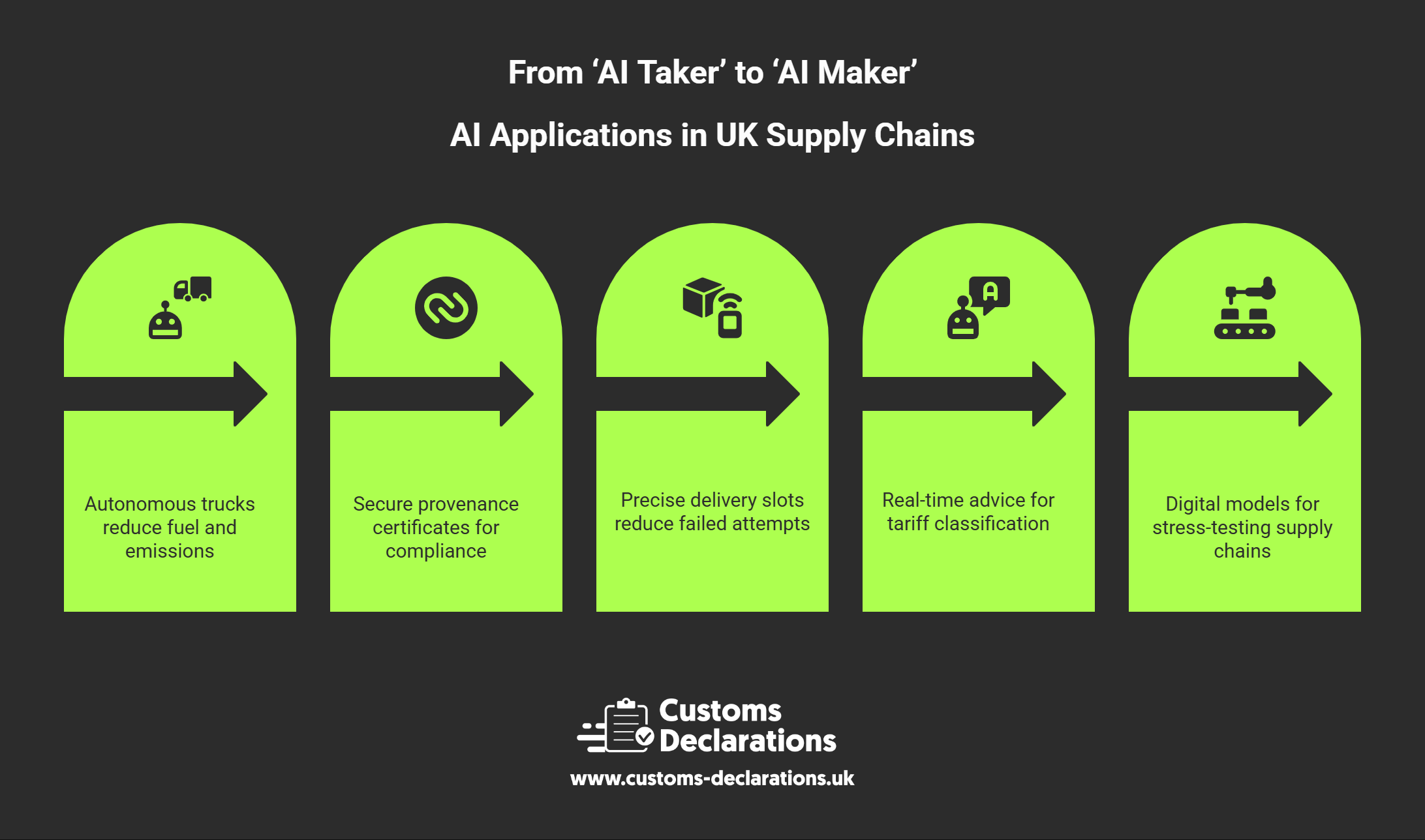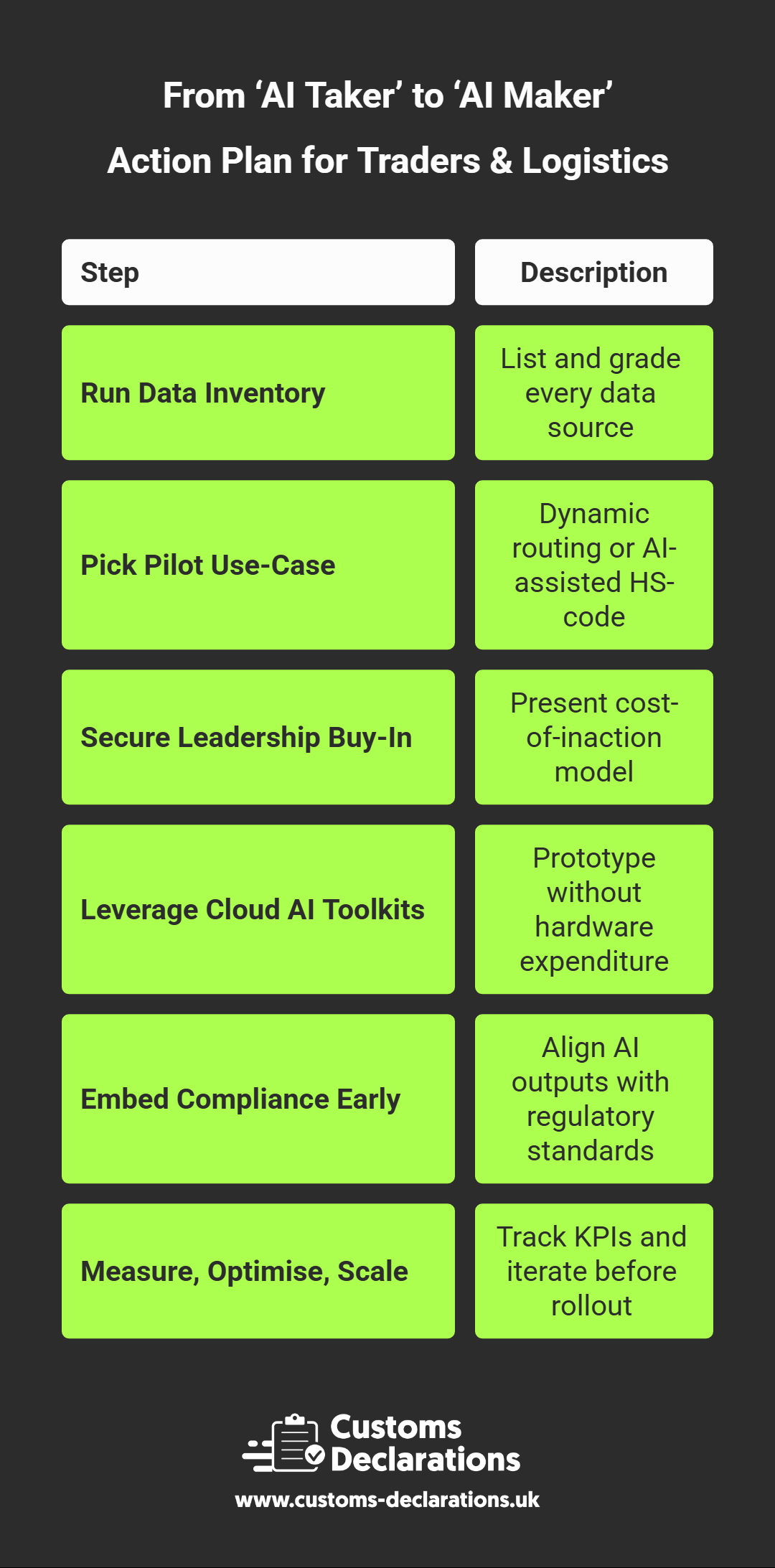Introduction – A Turning Point for British Competitiveness
For most of the last decade the United Kingdom has been an enthusiastic consumer of artificial-intelligence solutions engineered elsewhere. That chapter is closing fast. The Government’s 2025 AI Opportunities Action Plan, its £1 billion Compute Roadmap, and the launch of Bristol’s Isambard-AI supercomputer signal a decisive ambition: to become an AI maker—a country that designs, trains and exports the world’s most advanced models.
Nowhere will this pivot matter more than in trade and logistics, an industry that moves goods worth more than £1.3 trillion a year and employs over 2.5 million people. By connecting sovereign compute power, regional AI Growth Zones and a new wave of industrial-grade applications, the UK is laying the foundations for a radically smarter, cleaner and more resilient supply-chain ecosystem.
This in-depth article unpacks the strategy, examines high-impact use-cases, and explains what importers, exporters and customs professionals must do today to ride the wave rather than be swept aside.



